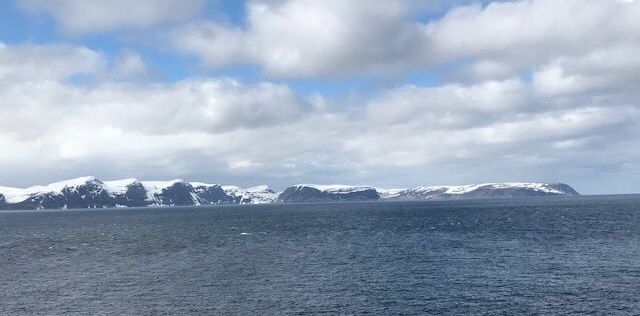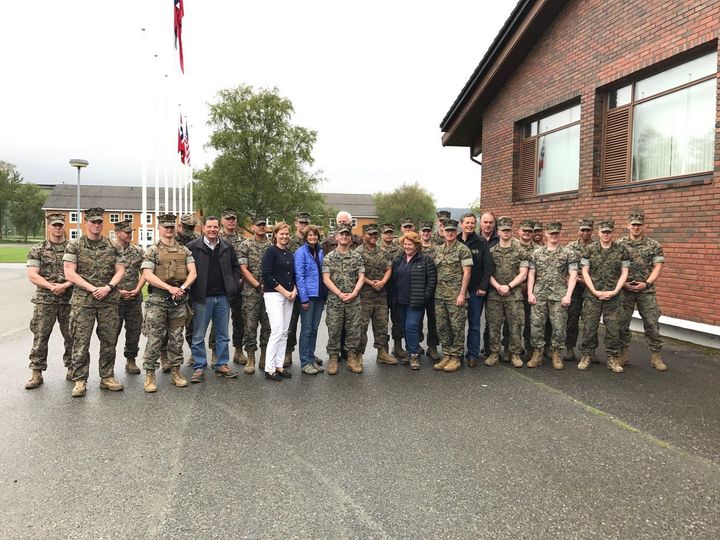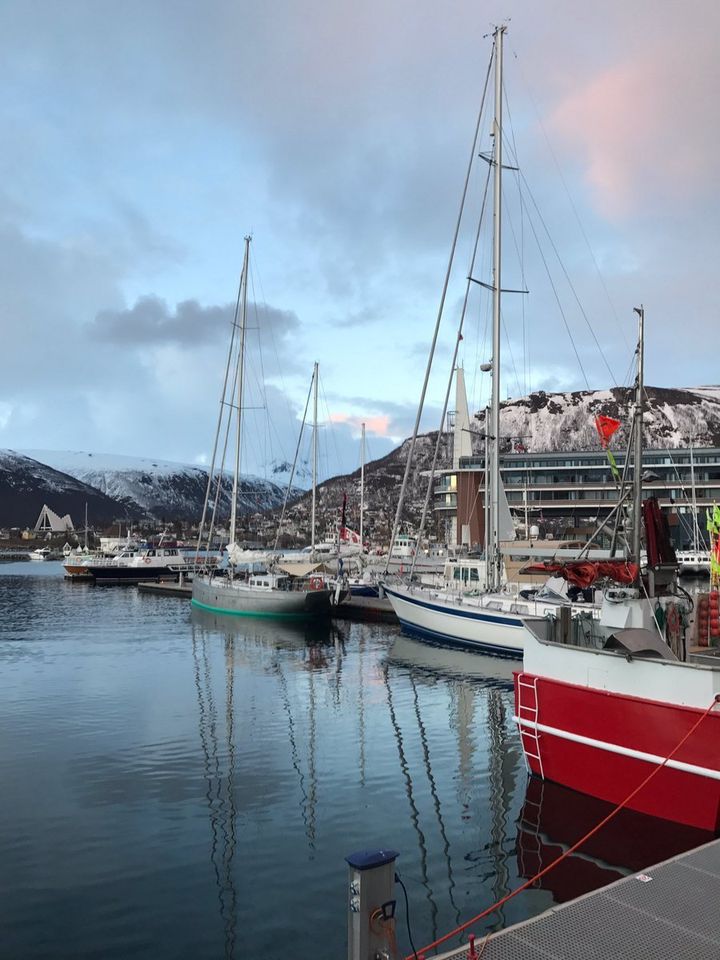
Snøhvit, Norway
I recently had the pleasure of accompanying Secretary of the Interior Ryan Zinke and five U.S. senators on a visit to Norway. Throughout 36 hectic hours, we traveled some 2000 domestic miles, stopping in three cities for an excellent program put together by the United States Embassy and my Norwegian colleagues in Oslo.
The group also paid a visit to the contingent of U.S. Marines stationed on a rotational basis outside the city of Trondheim.

Visiting the U.S. Marine Corps rotational presence at Vernæs in Trondheim, Norway
Being “embedded,” as I was, is a unique way to make new friends — and to see my own country through new eyes.
One official delegation after another seems to be flocking to Norway this year, an April visit by Speaker Paul Ryan and six Representatives from the House being the most recent example. Later this week a visit is scheduled by a large delegation that includes Rep. Vern Buchanan (R-FL), Rep. Jenniffer González-Colón (R-PR), Rep. Jeff Duncan (R-SC), Rep. Stacey Plaskett (D-VI), Rep. Tim Ryan (D-OH), and). Rep. Pete Sessions (R-TX).
The goal of my most recent trip, initiated by Senator Lisa Murkowski (R-AK), was to provide insight into how Norway’s petroleum activities in the Arctic lead to job creation, industrial development and prosperity. Included in the delegation were Senators John Barrasso (R-WY), John Cornyn (R-TX), Steve Daines (R-MO), and Heidi Heitkamp (D-ND).
For an ambassador, it is very satisfying to see how such visits contribute to strengthening the relations between our countries. But perhaps even more important, they give leading American officials a deeper understanding of our society and of our political priorities. Such as the importance of Arctic.
For hundreds of years, fishing and hunting, in addition to modest and marginal agricultural activities, have offered a livelihood for people in the northern parts of Norway. Today, we see rapid economic growth in the region based on oil and gas resources in the Barents Sea.
The petroleum resources of the Arctic underpin Norway’s position as a stable and long-term supplier of energy to international markets. Around 175 million people, 35 times the country’s own population, are currently supplied with energy from Norway.
One of the towns we visited, Hammerfest, claims to be the northernmost city in the world. At 70.7 degrees, Hammerfest is way north of the Arctic Circle and closer to the North Pole than is Barrow, Alaska.
With the Gulf Stream bringing warm water from the Gulf of Mexico, the climate and living conditions in these areas are very different from those at the same latitude in United States, Canada and Russia. The southern part of the Barents Sea is ice-free throughout the year.
The oil and gas industry in the northern part of Norway have been built up slowly over the past 30 years. The first gas field, Snøhvit, didn’t start production until 2007. The field has a subsea production facility remotely controlled from shore, and the natural gas is transported by pipeline to an LNG plant outside of Hammerfest. At the plant, the natural gas is liquefied and exported by ships.
The past 15 years have transformed Hammerfest from a small town in decline to a prosperous and vital little city with approximately 11,000 inhabitants. The oil and gas activities has been the main engine for this development, first with the Snøhvit development and later with the Goliat oil field.
Long-term and sustainable management of the oil and gas resources in the Barents Sea are the main reason why local communities are prospering, people are migrating to the North, youth pursuing education relevant for work in the region and new industries are being established. At the same time, the fishing industry continues to be important for the region.
The delegation learned about the importance of ensuring cooperation and coexistence with the oil and gas industry. They also learned that Norway applies the same standards for health, safety and environmental protection across the entire petroleum sector, regardless of whether the activities take place in the Arctic or elsewhere on our continental shelf.
Norway’s leading position is due both to strict government regulations of the sector and to a responsible industry. An example from Snøhvit is that large volumes of carbon dioxide are captured at the LNG plant outside of Hammerfest and injected into geological formations for permanent storage. Development and deployment of such technologies for carbon capture and storage (CCS) is an important area of cooperation between Norway and the United States.
There is still huge potential for further development of oil and gas in the Barents Sea. The Norwegian Petroleum Directorate estimates that two-thirds of undiscovered Norwegian oil and gas resources are in this area.
I’ve said it before and I'll say it again: Look North — that’s where the future is!
(For a full overview and more pictures from the last trip with SEC Zinke, follow my twitter at @KareRAas)

Midnight sun in Tromsø, Norway
